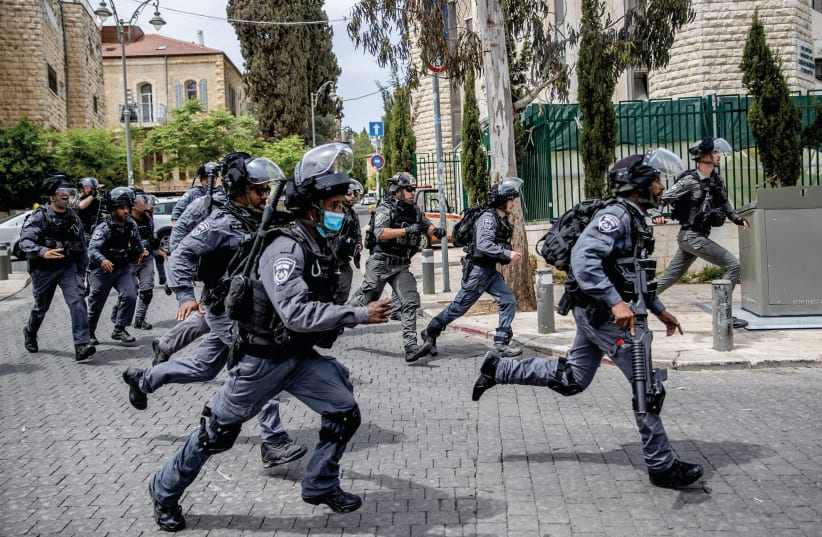Two neighborhoods with distinct populations have a similar problem.
Riots and violent attacks on passersby in both Mea She’arim and the Muslim Quarter (more precisely, around Damascus Gate) are prompting the police to take action.
At about 3 a.m. on Monday, a police force entered Mea She’arim, targeting 10 houses to arrest suspects for a long list of offenses, including arson of memorial wreaths on military graves. In one case, the officers got an address wrong and woke up an octogenarian couple, but they ultimately arrested the person who, according to intelligence, is the key organizer of the violence and vandalism of the past few weeks in Romema and along Bar Ilan junction.
Shmuel Papenheim, once a member of the most extremist groups of the Eda Haredit, says the flareup is the result of the neglect of the police and the authorities, which for too long have not reacted to such acts of provocation.
“The extremists have become a real threat. No one can talk to them and convince them they are doing wrong. For many decades, the non-Zionist groups in Mea She’arim protested many actions and decisions of the municipality and the state, but they always chose to demonstrate and that was about it. They were against all signs of modernity and secularism, but they knew they never had the power to stop these processes, so they just demonstrated and thereby felt they did their duty.
"But these past years have seen people who think and act differently. They believe that by using violence they can stop the modernization, they can stop the changes occurring everywhere in the country and the world. They really believe they can block these things, so they do not just protest and instead resort to vandalism and violence. The police must put an end to this situation. The first to suffer from these bad actors are the normative residents, the haredim who respect law and order whose life here has become a nightmare.”
Officially, the protest was sparked by the route of the next light rail line, connecting Mt. Scopus to Gilo – and crossing Geula and its surroundings, running through ultra-Orthodox neighborhoods.
“They oppose anything that could endanger their way of life. Immodestly dressed secular light rail passengers will travel through their neighborhoods,” says Papenheim, “but it’s more than that. It’s as though the light rail crossing Mea She’arim will force them to include new curriculum studies in the yeshiva. This is of course not the case, but they are such extremists now that nothing can convince them otherwise.”
A FEW streets away from the violent scenes in Mea She’arim, the stairs around Damascus Gate have become the setting for violent acts these past few weeks by mostly young Arabs against Jews and police units on duty there: firebombs, slapping and punching attacks on young haredim. The frequency of such acts is growing daily.
Ami Meirav, a tour guide specializing in the Old City and a consultant for municipal projects, says these are the actions of a few youths and do not represent the greater population still coping in the aftermath of the pandemic.
“The youths are bored. They are not linked to any educational framework, they feel they can do whatever they want, and technology – TikTok and other social media – influences them to break laws. Their own parents cannot prevent these acts. In most cases, the parents live in neighborhoods far from the Old City, and the youth are left to themselves, resisting all discipline."
The municipality, police and organizations that have been working for years here to dialogue with the parties sound perplexed and stress the need to end these acts of violence before they become more serious.
“Nobody likes a brutal police reaction,” says an Arab resident of the Muslim Quarter, “and I cannot openly say I support it, but if my life and my neighbors' become a nightmare because of these young shabbab [bullies] what can I do? I beg, without daring to say it publicly, that the police will intervene before it becomes too late.”
On the haredi side, Haim Epstein, a city councilman and a leader of the radical stream of Peleg Yerushalmi, says he cannot understand what is going on in Mea She’arim:
“I have no words to express it – I simply do not understand this situation.”
Many observers say that some of the extremists taking part in these acts are not necessarily members of the extremist sects, but young haredim who during the pandemic have been dislodged from all educational frameworks and the yeshivot, and are left to themselves in the streets of Mea She’arim, falling under the influence of the extremist leaders.
